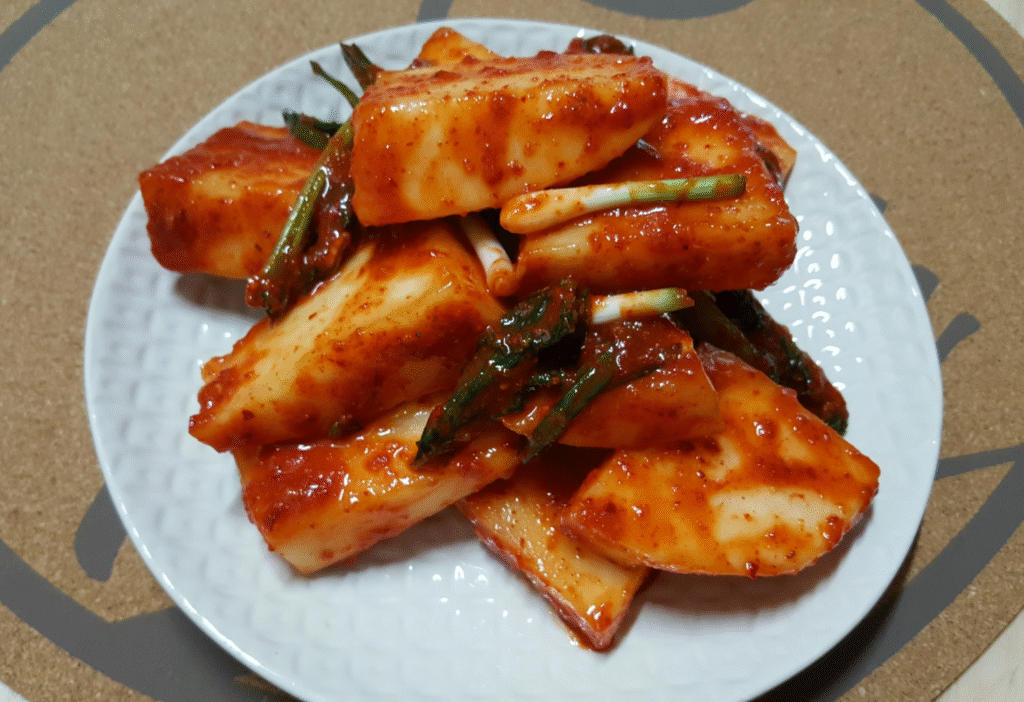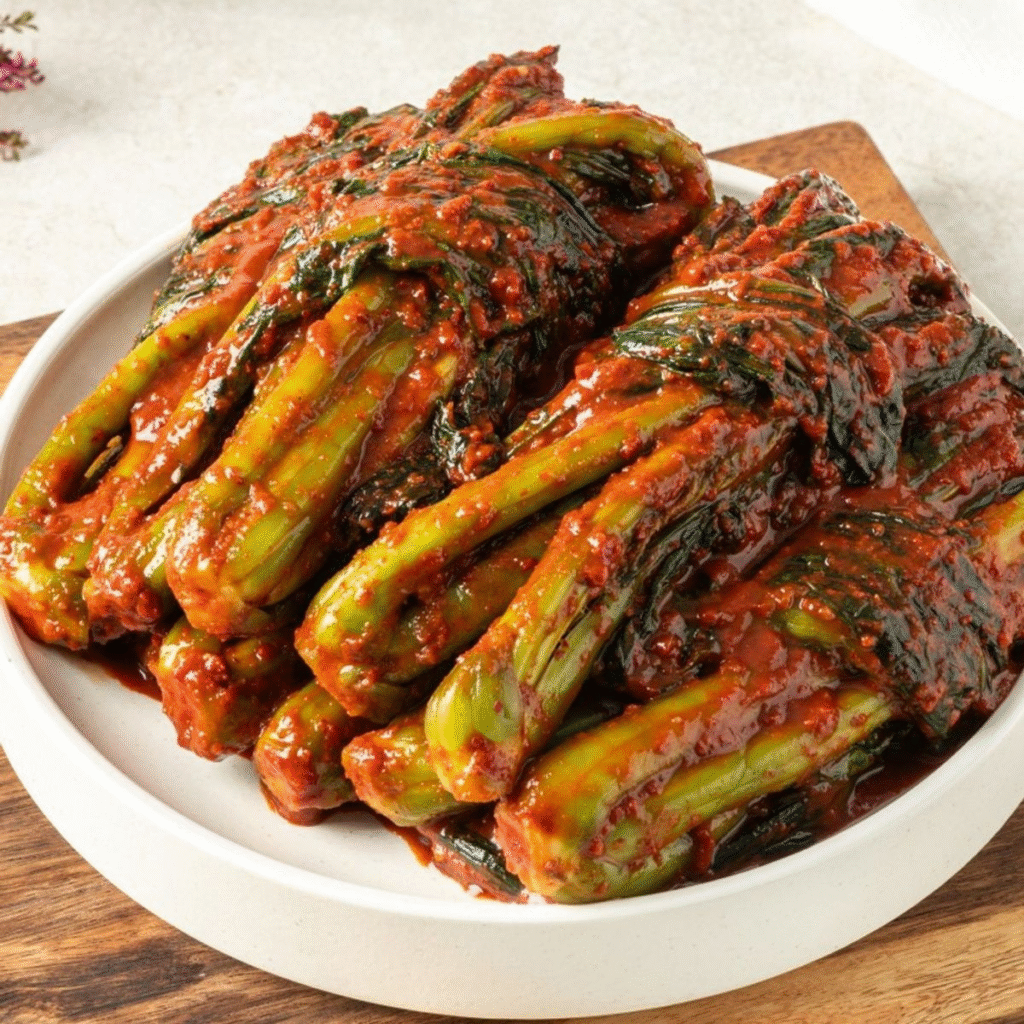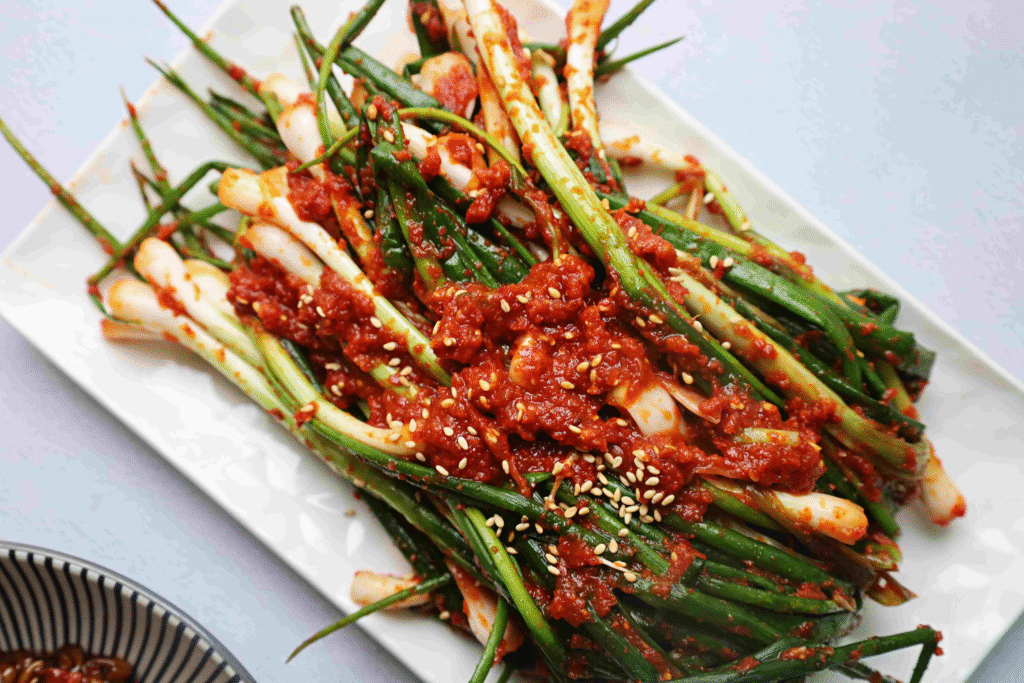From spicy cabbage to radish water kimchi, discover 7 delicious types of kimchi that show just how much Koreans love their national dish.
Koreans don’t just eat kimchi — they live and breathe it. Whether it’s breakfast, lunch, or dinner, this fermented side dish is always on the table. But did you know there are dozens of different types of kimchi, each with its own personality?
Let’s take a (fun) tour of the most iconic kinds — and why each one deserves a spot in your next K-food binge.
1. 🥬 Baechu Kimchi (Napa Cabbage Kimchi)
The classic. Made with napa cabbage, red pepper flakes, garlic, ginger, and a whole lotta love.
→ This is the one served with everything, from Korean BBQ to ramen.

2. 🥕 Mu Kimchi (Radish Kimchi)
Chunky, crunchy, and slightly less spicy than its cabbage sibling.
→ Perfect for beginners or those who like their kimchi with a bit of bite.

3. 💧 Dongchimi (Radish Water Kimchi)
A cool, watery kimchi made with big-cut radish and mild seasoning.
→ Often eaten in summer and paired with hot dishes like naengmyeon (cold noodles) for contrast.

4. 🌿 Gat Kimchi (Mustard Leaf Kimchi)
Spicy and aromatic, made with leafy mustard greens that pack a punch.
→ The strong, peppery flavor makes this a favorite among older generations.

5. 🥒 Oi Sobagi (Stuffed Cucumber Kimchi)
Crunchy cucumbers sliced and stuffed with spicy veggies.
→ Light, refreshing, and often eaten as a summer side dish.

6. 🌶 Pa Kimchi (Green Onion Kimchi)
Made with whole green onions soaked in spicy seasoning.
→ Has a bold taste and satisfying chew. Usually served with rice porridge or soup.

7. 🧑🌾 Chonggak Kimchi (Young Radish Kimchi)
Named after the “bachelor” radish, this variety uses small, firm roots.
→ Crunchy and slightly sweet — a household favorite, especially in winter.

🤣 Why This is “Funny Korea” Content
Because to non-Koreans, having seven different kinds of fermented vegetables in one fridge sounds like overkill.
But in Korea?
“What do you mean you only have ONE kind of kimchi?”
Even Korean moms carry their own homemade kimchi to restaurants “just in case.” That’s love, obsession, and culture — all in one jar.

[…] 👉 Why Koreans Are Obsessed with Kimchi […]